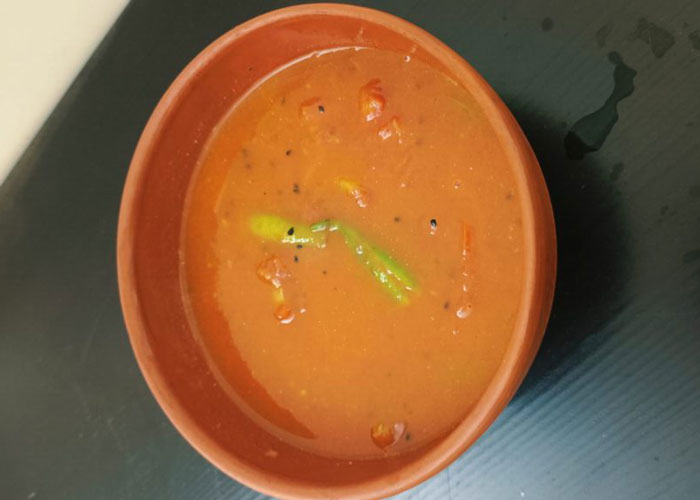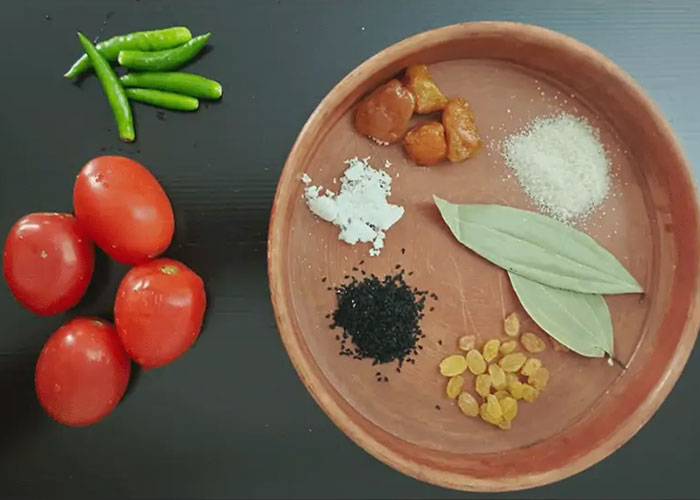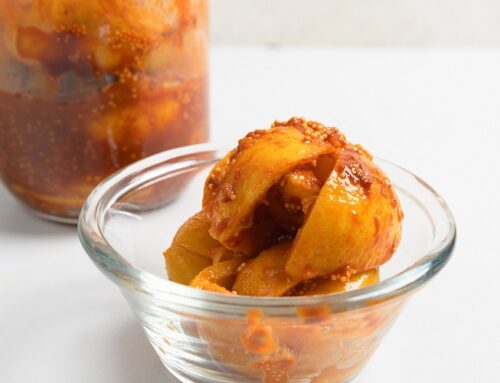I am not a fan of chutney, or anything too sour, in general. But I really appreciate how fun the word “chutney” is. Generally the word is translated to be sauce. But to us sauce and chutney are very different. In real life I have never seen anyone use chutney and sauce interchangeably. Hence we have tomato sauce that is one thing, and tomato chutney which is completely different. Chutney to me is something that you will savor eating, get your hands and mouth dirty. The word literally (or at least to me) translates to “something you will lick” and that is exactly how it should be eaten.
Chutney is usually treated as a desert item. You would have the full course lunch or dinner and then have some chutney. Usually at home you would have chutney served on the same plate you just ate in. it may sound kinda icky but trust me this is the way. And as we Bengali people eat almost everything using our bare hands (don’t worry, we wash our hands), we eat chutney in the same way. But of course it can be served in bowls and be eaten with spoons, but it loses the emotion.
That being said, chutney is also eaten with boiled rice. I particularly love it. As I just said, chutney is served last. So I would intentionally save some boiled rice to eat with tomato chutney. The sweet and tangy flavor feels so good with rice, and I don’t think any other item has a similar kind of taste. But it’s also not something that you would have in a large quantity. You wouldn’t want your whole lunch to be boiled rice with tomato chutney, it’s just something you are gonna cherish at the end of your meal.
Other kinds of chutney, maybe even tomato, can be eaten with roti as well. But that’s more popular in the other parts of the region, not Bangladesh. But still some people eat chutney and roti here too, but never with tomato chutney. Though that “never” is less factual and more hopeful. I cannot even imagine tomato chutney with roti. But if you can, and if you do eat them together, all the power to you.
Chutney, for me especially tomato chutney, has such a homely feeling. I really can’t describe it in words. It’s just a warm, sweet feeling (it also tastes warm and sweet but that’s besides the point). It might be because it’s a food you rarely have outside of your house. I have not seen any restaurant serving tomato chutney. So this dish is just home, a little sweet, a little sour and regardless of the weather outside, warm.
Keen readers might have noticed that the dish is named Tomato Tok. But I have been blabbering about chutney. Well tok (টক) meaning “sour”. So you can see where this is going. Tok and Chutney are not the same but in many cases are used interchangeably. And as lovely as the word chutney is, households tend to use the word “Tok” more.
Now let’s talk about the actual dish. Not all tomato tok are the same. Some are denser, some lighter. Some are sweeter, some more sour. Even the ingredients can be switched up a bit. Like in our house, the chutney is denser and mother adds tamarind for the added taste. But since I don’t like it to be too sour, she adds even more sugar.
So to me making chutney sounds a lot like choosing your own adventure game. I guess that is true for all recipes, but more so in this case. You can make it more sour, or you can get the flavor of tamarind and make it sweeter still. Even after that you have the choice of density. So many ways to go, and little room to mess up. You can even choose to keep the remains of the tomato or remove them to make the whole thing a pure liquid. But I recommend keeping the tomato pieces.
One thing to be careful about is that if you over-boil the tomatoes, they will melt completely and ruin the dish. So be careful while boiling.
Instructions
- Heat a pan and add some oil to it. Add bay leaf and black cumin to the hot oil.
- Cut the tomatoes and add them to the pan. Add vinegar to it.
- Add salt and sugar as per taste. Cook for 15 minutes.
- Add prunes and raisins. Cover the pan with a lid. Cook for 10 minutes.
- Add some green chilies. Now it's ready to serve.
Nutrition







